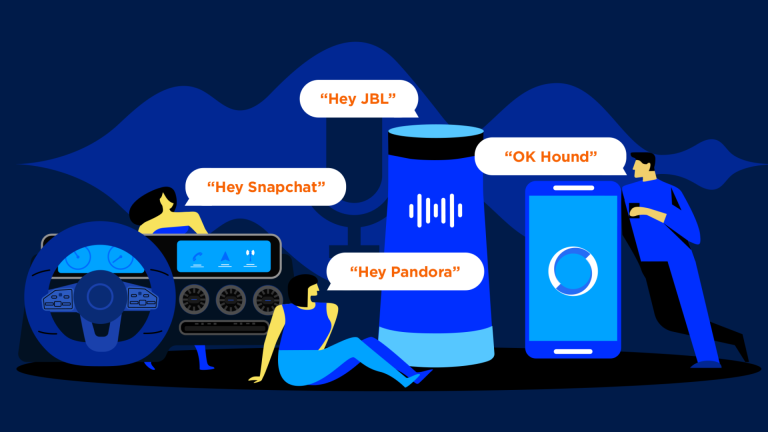For example, users could ask their voice assistant:
- “Find men’s shoes that are size 8, sneakers, blue, and are waterproof.”
- “Show me children’s toys that are for ages 2-3, rated 4 stars or more, are non-toxic, and will arrive by this Friday.”
- “I need women’s jeans that are size 30, skinny, black, and less than one hundred dollars.”
Conversational AI can also assist with customer support in retail call centers for customers wanting to return or exchange items or receive other assistance with their account, reducing long hold times and promptly answering their questions.
3. Transportation
The transportation industry is a giant that encompasses airlines, trains, buses, trucks, and rideshares, with each mode of transportation implementing conversational AI in unique ways. Travelling can be some of the most stressful times for customers, and conversational AI in airports, train stations, and bus terminals can create a more efficient and seamless experience by providing voice-enabled apps, kiosks, and call centers to simplify journeys.
Throughout journeys on trains and buses, internet connections come and go. With Edge+Cloud connectivity, passengers can access the cloud for queries when the internet is available while still being able to use the voice assistant when the internet is lost. Some queries include:
- “How long until Eugene?”
- “Where are we now?”
- “How long is the stop in Sacramento?”
- “Why are we delayed?”
Other transportation situations, such as airports, might only require Cloud connectivity for travelers to ask queries about flight statuses, gate numbers, and departure and arrival times.
Trucking is also beginning to add conversational AI to its haul to improve driver safety and experiences. With so many hours spent behind the wheel, fatigue and brake problems are some of the largest reasons for truck accidents, and conversational AI can help inform drivers of better routes, keep them entertained, and provide maintenance alerts. In-truck voice assistants can provide communication and navigation to truckers during the long hours they spend on the road. Popular truck routes, updates, and check-ins are important elements that, with voice AI, can be done while still keeping hands on the wheel and eyes on the road.









